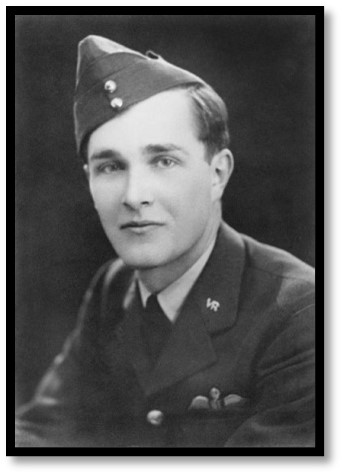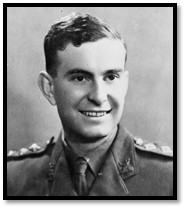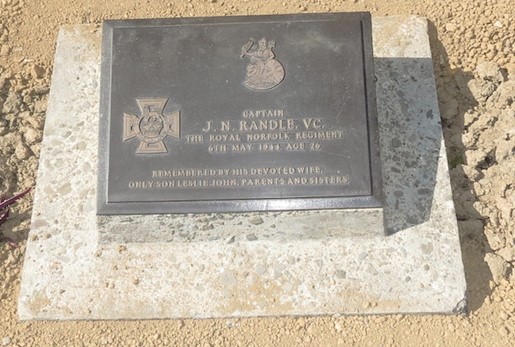
The Victoria Cross (VC) is the highest and most prestigious award of the British honours system and is bestowed for acts of valour in the presence of the enemy to members of the British and Commonwealth Armed Forces. A total of 1,358 awards of the VC have been made since its inception on 29 January 1856, with just three servicemen being the granted the award on a second occasion.
Given its rarity, and the circumstances in which the award is achieved, it is not surprising to find numerous plaques and memorials to VC recipients across the world. Whether it is in the location where the action took place, a street or building named after the individual, or perhaps a school or church they attended, a majority recognise the achievements of an individual. Occasionally, a collective of recipients can be found listed at a Regimental museum or depot, a university or college, but it is unusual to find more than one listed on a local war memorial, particularly where it relates to one particular period such as the Second World War. Much rarer, is to find the award being made to a single family, in the same period, on the same memorial.
If you make a visit to the small Hertfordshire town of Radlett, you will find, situated on the ancient roadway named Watling Street, a memorial listing the men and women from the town who gave their lives in two world wars. Amongst the names of those added following the cessation of hostilities in 1945 are Leslie Manser VC and John Randle VC. Not only is this very unusual but, to my knowledge, unique within the United Kingdom.
Their life stories bear some striking resemblances, they are bonded by a single-family link and their demise occurred equally in circumstances of gallant self-sacrifice.
Leslie Thomas Manser VC

The story of Leslie Manser begins with his father, Thomas James Stedman Manser, a British civil servant who was born in India on the 24th October 1883. At the age of 15, Thomas began work with the Indian Post and Telegraph Department, part of the India Office, being employed as a telegraphic engineer, a career that would last for some 37 years and would see him retire as a Divisional Engineer. Thomas married Rosaline Ellen Louise Edwardes on the 25th October 1911. Their first child, Mavis Ellen, was born on the 27th July 1912, and a son, Cyril James, was born on the 15th September 1916. Their third child, Leslie Thomas Manser, was born in New Delhi, India, on the 11th May 1922.
Young Leslie became a student of the Victoria Boys’ School, Kurseong, Darjeeling, and in December 1936, when Thomas retired, the family returned to England, where they settled in Radlett, Hertfordshire. He continued his education at Aldenham School, Elstree, during which time his sister, Mavis, worked as a Stenographer for Handley-Page at Radlett airfield and his brother, Cyril, was employed in the aeronautics industry as an engineer.
With the outbreak of the Second World War, Leslie volunteered as an ARP Warden in the local area but was eager to play a part in the fight against Hitler. Attempts to enlist in both the Army and Royal Navy were unsuccessful, however, in August 1940, he approached the Royal Air Force and was quickly accepted with a view to training as a Pilot. He was commissioned as a Pilot Officer in May 1941 and undertook an intensive training course that was to see him become a member of Bomber Command. Following a navigational course and final operational training with No.14 Operational Training Unit at RAF Cottesmore, he was posted to No. 50 Squadron which, at that time, was operating Handley Page Hampden’s from RAF Swinderby, in Lincolnshire.
He joined the Squadron on the on 27 August 1941 and, two days later, experienced his first operation, as a second pilot, taking part in a bombing raid on Frankfurt. During the next two months he flew six more sorties against targets including Berlin, Hamburg, and Karlsruhe before being posted to No.25 Operational Training Unit, at RAF Finningley, on 7 November 1941. A month later he was posted back to No.14 Operational Training Unit, but this time as an instructor.
After serving briefly with No. 420 Squadron, RCAF, Leslie re-joined No.50 Squadron in April 1942 which, by then, was operating from Skellingthorpe, and converting to the new Avro Manchester heavy bomber. He piloted one of the new aircraft during a leaflet drop over Paris and flew a further five sorties during April and May. Leslie was promoted to Flying Officer on 6 May 1942, just five days before his 20th birthday.
On night of the 30/31 May 1942, the RAF launched the first of its ‘thousand bombers’ raids, a devastating attack on the city of Cologne. The aircraft used were a mixture of Whitleys, Wellingtons, Hampdens, Stirlings, Halifaxes, Manchesters and Lancasters, a force of 1,046 bombers along with an assortment of night fighters in support.
On the morning of 30th, Manser and another pilot were instructed to collect two Manchesters from Coningsby, Lincolnshire. As many of these aircraft were drawn from reserves and training squadrons, it was inevitable that many would be in poor condition. Manser’s aircraft was no exception, it had no mid upper turret and a sealed escape hatch.
That evening Manser and his crew took off in L7301 ‘D’ Dog, with a full bomb load of incendiaries. The aircraft, now difficult to manoeuvre, was unable to reach an altitude of more than about 7,000 ft. Hoping the main bomber force would attract the greater concentration of flak, Manser decided to continue on. As he came over the target, his aircraft was caught in searchlights and was hit by flak. In an effort to escape the anti-aircraft fire he took violent evasive action, which reduced his altitude to only 1,000 ft (300 m) but he could not escape the flak until he was clear of the city. By this time, the rear gunner, Sgt Naylor, was wounded, a bomb bay door blown off, the front cabin full of smoke and the port engine overheating.
Rather than abandon the aircraft and be captured, Manser tried to get the aircraft and crew to safety. The port engine then burst into flames, burning the wing, and reducing airspeed to a dangerously low level. The crew prepared to abandon the aircraft which, by then, was barely controllable and a crash inevitable. The aircraft was by now over Belgium, and Manser ordered the crew to bail out. It was Sergeant Leslie Baveystock’s job to fit a chest harness to Manser, but he refused the offer of a parachute as he was acutely aware that as soon as he let go of the controls the aircraft would stall and crash. He ordered Baveystock to leave the stricken aircraft and remained at the controls, sacrificing himself to save his crew. As they parachuted down, they watched the bomber crash into a dyke at Bree, north east of Genk, where it burst into flames. Manser did not escape.
His crew, with the exception of Pilot Officer Barnes who was captured by the Germans, were helped by local Belgians to evade capture and made their way back to the UK via France, Spain and Gibraltar. The testimonies of the five evaders were instrumental in the posthumous award of the VC. They themselves were to be awarded wither DFC’s or DFM’s.
The citation in the London Gazette of 20th October 1942 gives the following details:
Flying Officer Manser was captain and first pilot of an aircraft which took part in the mass raid on Cologne on the night of 30th May 1942. Despite searchlights and intense and accurate anti-aircraft fire he held his course and bombed the target successfully from 7,000 feet. Thereafter, although he took evasive action, the aircraft was badly damaged, for a time one engine and part of one wing were on fire, and in spite of all the efforts of pilot and crew, the machine became difficult to handle and lost height. Though he could still have parachuted to safety with his crew, he refused to do so and insisted on piloting the aircraft towards its base as long as he could hold it steady, to give his crew a better chance of safety when they jumped. While the crew were descending to safety, they saw the aircraft, still carrying the gallant captain, plunge to earth and burst into flames. In pressing home his attack in the face of strong opposition, in striving against heavy odds to bring back his aircraft and crew, and finally, when in extreme peril, thinking only of the safety of his comrades, Flying Officer Manser displayed determination and valour of the highest order.
Leslie Manser was originally buried at Brusthem Airfield (St. Trond) but on the 31 January 1947 was reburied in the Heverlee War Cemetery, Belgium. His headstone is inscribed;
“Beloved Son Of T.J.S. and R. Manser, Radlett, Herts. England. – He Died To Do His Duty”

His name is recorded on the Radlett war memorial and he is also remembered on the memorial at the Victoria Boys’ School, Kurseong, Darjeeling.
The Manser School in Skellingthorpe, Lincolnshire, is named after him.
Following the devastating loss of their brother, Cyril and Mavis continued with their work in support of the war and, for Mavis, there was also now the fact that she had married a serving soldier, John Niel Randle.
John Niel Randle VC

John Niel Randle was born in Varanasi, Uttar Pradesh, India, on the 22 December 1917, the son of Dr. Herbert Niel and Edith Joan Randle. His father was the Librarian of the India Office Library, a Professor of Philosophy at Queen’s College, Benares and a writer on Indian philosophy.
He was educated at the Dragon School, Marlborough College, and Merton College, Oxford, where he qualified in law. One of his best friends during this time was Leonard Cheshire, who was himself awarded the Victoria Cross during the Second World War.
After being commissioned as a Second Lieutenant in the Royal Norfolk Regiment in May 1940, he was quickly promoted to temporary Captain whilst serving with the 2nd Battalion, which was stationed in Hessle, Yorkshire, being billeted in Ferriby Road. John lived in the home of Dr Harley Patterson Milligan and his wife, Charlotte. It was here in 1941 that he became engaged to Mavis Ellen Manser, the sister of Leslie Thomas Manser.
The couple married in January 1942 and Mavis returned to her work at the Handley-Page factory in at Radlett. Their only son, Leslie John, was born at the end of the year. Sadly, by this time the Battalion had been posted overseas and John Randle was never to see his son.
Captain Randle was commander of ‘B’ Company, 2nd Battalion, Royal Norfolk Regiment. On 4 May 1944 during the Battle of Kohima in northeast India, he was ordered to attack the Japanese flank on General Purpose Transport (GPT) Ridge during the relief and clearance of Kohima. The citation from the London Gazette reads:
On the 4th May 1944, at Kohima in Assam, a Battalion of the Royal Norfolk Regiment attacked the Japanese positions on a nearby ridge. Captain Randle took over command of the Company which was leading the attack when the Company Commander was severely wounded. His handling of a difficult situation in the face of heavy fire was masterly and although wounded himself in the knee by grenade splinters he continued to inspire his men by his initiative, courage and outstanding leadership until the Company had captured its objective and consolidated its position. He then went forward and brought in all the wounded men who were lying outside the perimeter. Despite his painful wound Captain Randle refused to be evacuated and insisted on carrying out a personal reconnaissance with great daring in bright moonlight prior to a further attack by his Company on the position to which the enemy had withdrawn.
At dawn on 6th May the attack opened, led by Captain Randle, and one of the platoons succeeded in reaching the crest of the hill held by the Japanese. Another platoon, however, an into heavy medium machine gun fire from a bunker on the reverse slope of the feature. Captain Randle immediately appreciated that this bunker covered not only the rear of his new position but also the line of communication of the battalion and therefore the destruction of the enemy post was imperative if the operation were to succeed.
With utter disregard of the obvious danger to himself Captain Randle charged the Japanese machine gun post single-handed with rifle and bayonet.
Although bleeding in the face and mortally wounded by numerous bursts of machine gun fire he reached the bunker and silenced the gun with a grenade thrown through the bunker slit. He then flung his body across the slit so that the aperture should be completely sealed. The bravery shown by this officer could not have been surpassed and by his self-sacrifice he saved the lives of many of his men and enabled not only his own Company but the whole Battalion to gain its objective and win a decisive victory over the enemy.

Originally buried in the location named Norfolk Ridge, the body of John Randle and the men of the Royal Norfolk Regiment were reinterred in what is now Kohima Military Cemetery on the 15 August 1944.
His headstone is inscribed, “Remembered By His Devoted Wife, Only Son Leslie John, Parents And Sisters”. His name, like that of Leslie Thomas Manser VC, is recorded on the Radlett war memorial in Hertfordshire.

Despite the devastating blow of losing her brother, and then her husband, Mavis found love again and on the 6 September 1952 married Richard Andrew Charles Lowndes. She passed away on the 23 January 2008 at the age of 95. Remember Them.
Sources:
- London Gazette
- CWGC
- Ancestry
- Findmypast
- British Newspaper Archives
- War Memorials Online